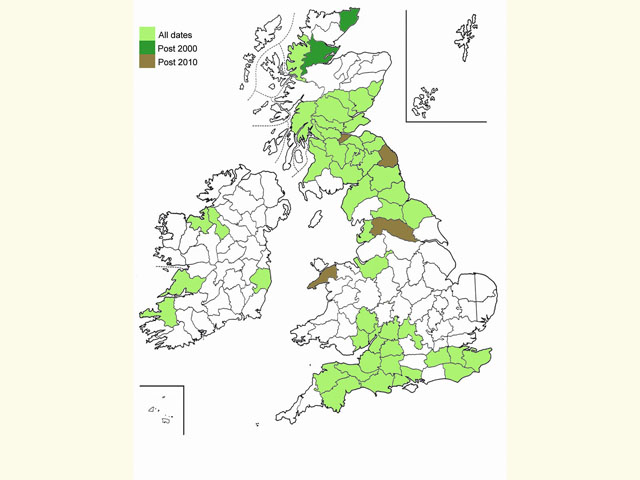Elachistidae
38.040 Scarce Wood-rush Miner Elachista trapeziella Stainton, 1849
Notable A
Similar species:
Forewing: 4 to 5mm
Habitats: Shady deciduous woodland and damp shady gorges.
Habits:
Foodplant: The larva forms a mine in a leaf of Hairy Wood-rush or Great Wood-rush. The mines differ on the different plants, but both start in late autumn and are vacated for pupation between late April and June. When Great Wood-rush is the host a long narrow gallery mine is formed half way along the leaf and follows a vein. It may reverse and form a parallel gallery alongside the first. A large blotch is formed at the end of this mine in March. In the case of Hairy Wood-rush the mine is in the upper part of the leaf and follows a vein, with two or more parallel mines alongside it. In March a blotch mine is formed obliterating part or all of the previous gallery mine. The larva is orange-pink (orange-red above), with a diffuse cream dorsal line and a more diffuse cream coloration along the sides. The head and prothoracic plate are black. Pupation takes place on a leaf attached by a silk girdle.
On the European mainland it has also been recorded feeding on White Wood-rush.

